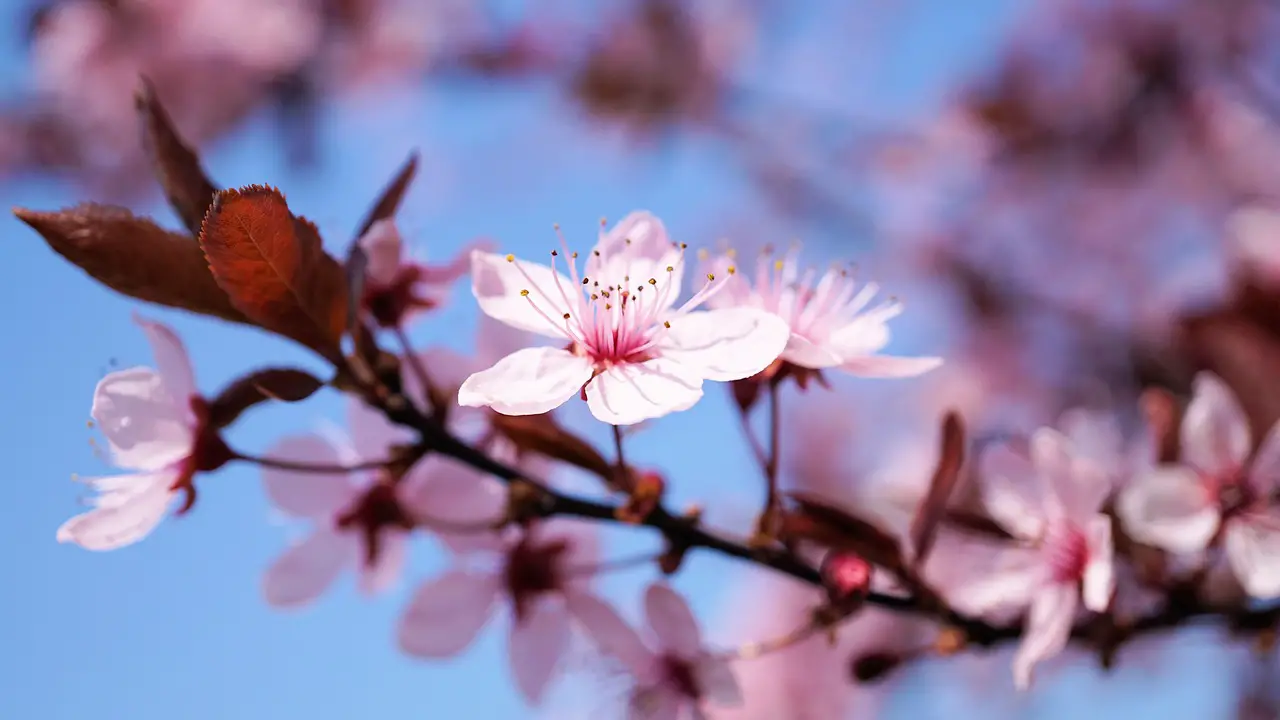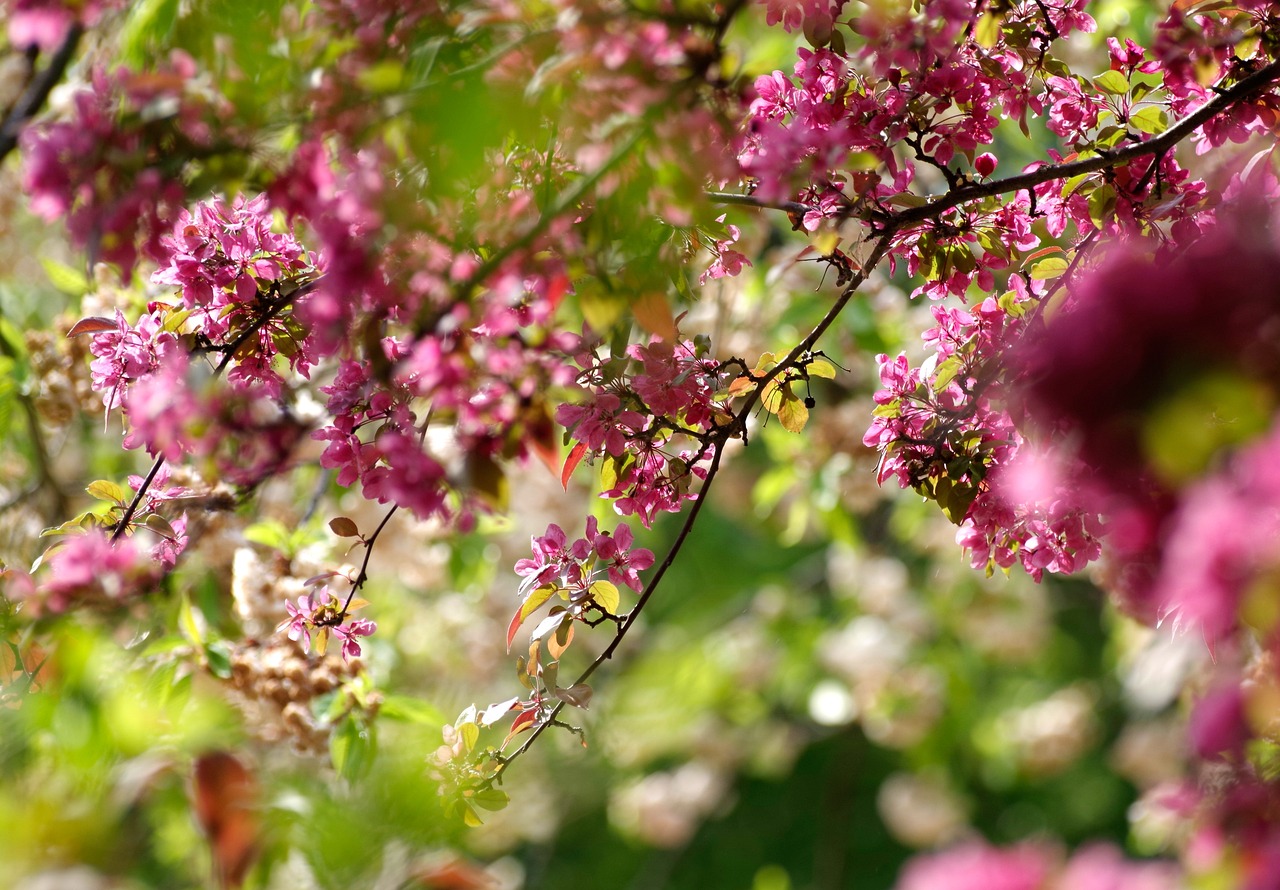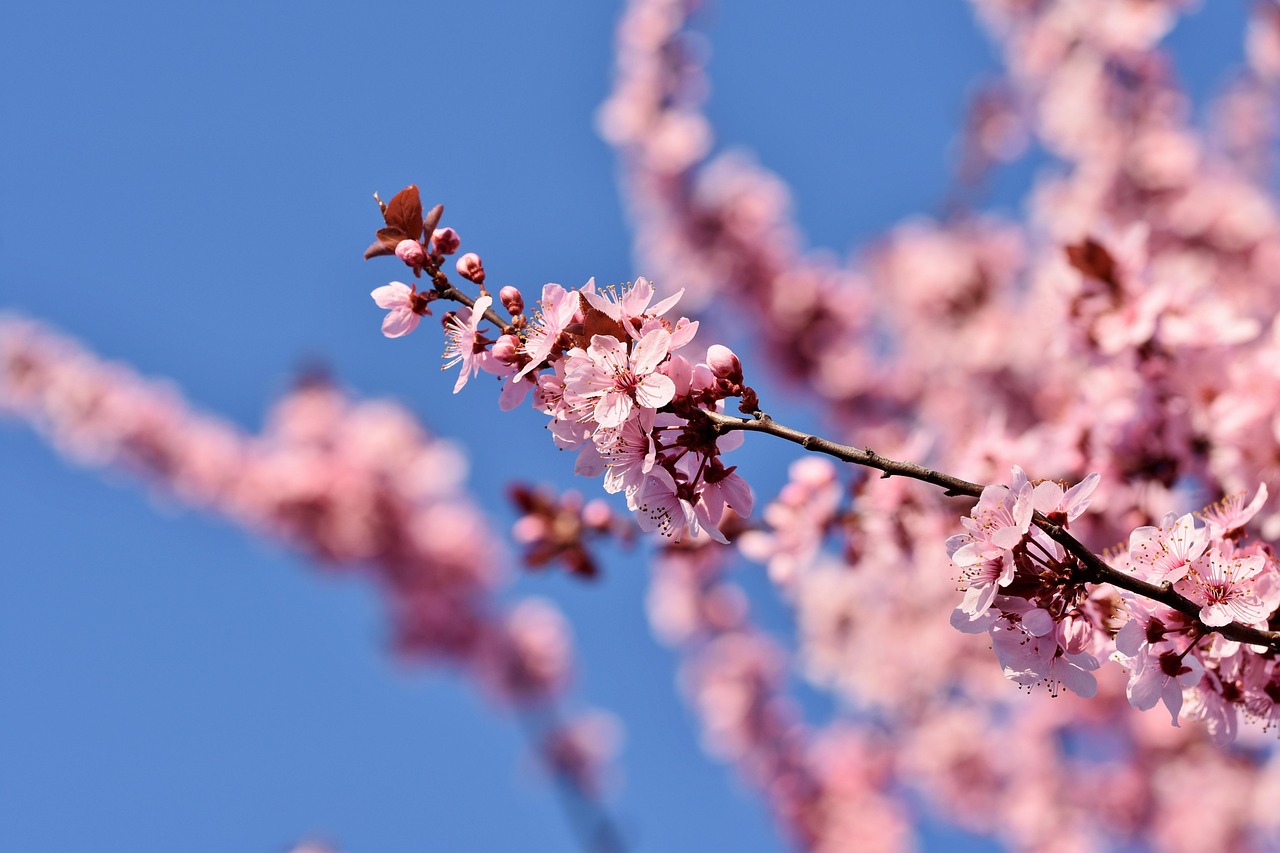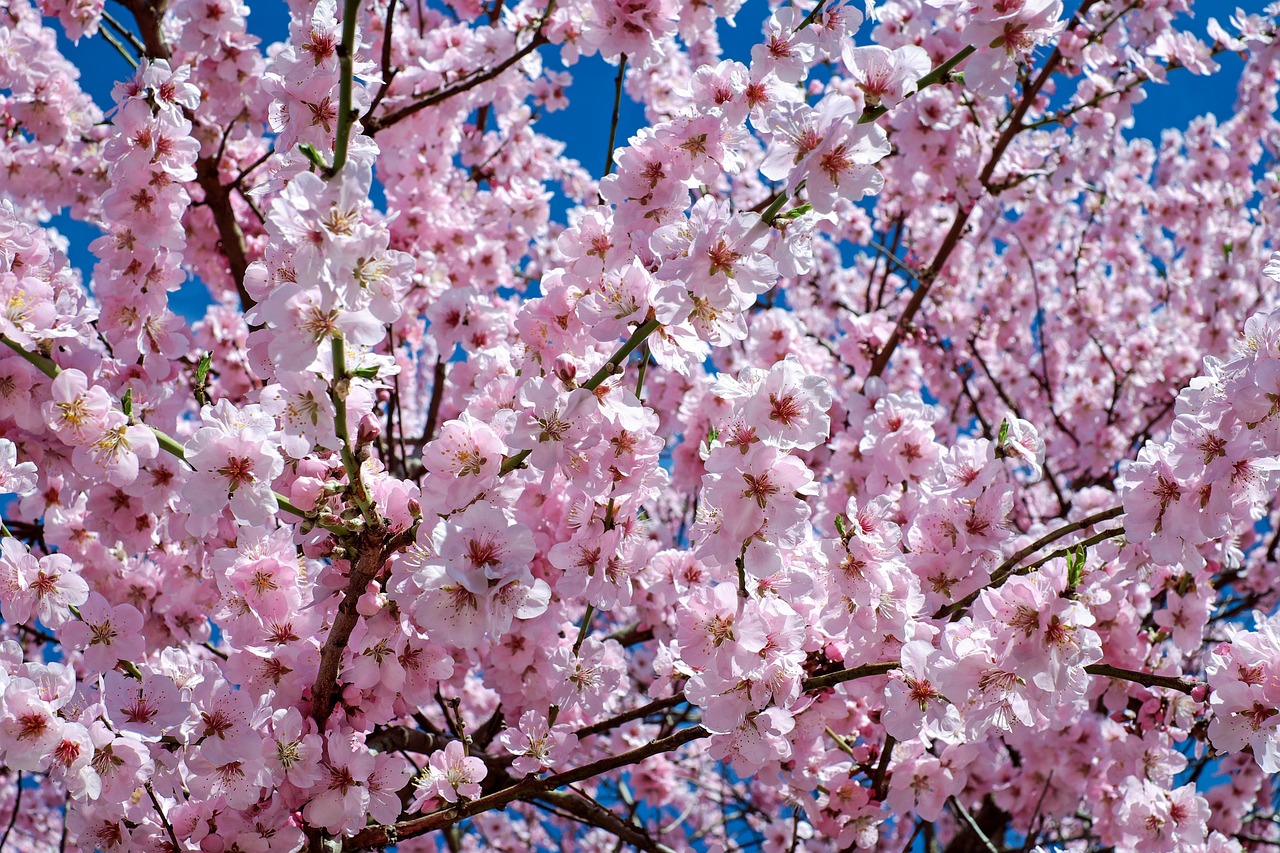Pruning ornamental cherry trees enhances their beauty and health. It allows for better air circulation, encourages blossoming, and maintains an attractive shape. Proper techniques can lead to stunning displays of flowers each spring.
Ornamental cherry trees are beloved for their breathtaking blossoms and graceful forms. These trees provide a stunning display in gardens and parks, often captivating visitors during the blooming season. However, to maintain their health and ensure an impressive floral display, proper pruning is essential. Understanding the right techniques can help gardeners achieve these goals effectively.

Pruning not only shapes the tree but also promotes growth by removing dead or diseased branches. Additionally, it can prevent overcrowding within the canopy, allowing sunlight to reach inner branches and improving air circulation. This is particularly important for ornamental cherry trees, which can be susceptible to diseases if not properly cared for.
Understanding Ornamental Cherry Trees
Ornamental cherry trees belong to the genus Prunus, which includes various species and cultivars. Some of the most popular varieties include:
- Yoshino Cherry (Prunus x yedoensis)
- Kwanzan Cherry (Prunus serrulata ‘Kwanzan’)
- Weeping Cherry (Prunus subhirtella ‘Pendula’)
- Okame Cherry (Prunus incisa)
These trees are characterized by their stunning blooms that can range from pale pink to bright white. Each variety has its own unique flowering period, typically occurring in early spring. Knowing the specific type of cherry tree you have is crucial for determining the best pruning practices.

When to Prune Ornamental Cherry Trees
The timing of pruning is vital for the health of ornamental cherry trees. Generally, late winter or early spring is the best time to prune before the buds begin to swell. This timing allows for minimal disruption to the blooming cycle. However, pruning should be avoided during the fall as it can stimulate new growth that may not harden off before winter.
In some cases, light pruning can be performed after the blooming period. This helps maintain the shape of the tree and encourages a healthy structure for the following year’s blooms. The key is to ensure that major pruning is done while the tree is still dormant.
Essential Pruning Techniques
Effective pruning involves several techniques tailored to enhance the structure and health of ornamental cherry trees. Here are some essential methods:

- Thinning: This technique involves selectively removing branches to increase light penetration and air circulation.
- Heading Back: Cutting back branches to a bud or branch helps control height and encourages bushier growth.
- Cleaning: Removing dead, damaged, or diseased branches is crucial for preventing disease spread.
- Shaping: Maintaining the natural shape of the tree ensures a pleasing aesthetic while promoting even growth.
Tools Needed for Pruning
Using the right tools can make pruning more efficient and effective. Here are some essential tools for pruning ornamental cherry trees:
| Tool | Description |
|---|---|
| Hand Pruners | Ideal for small branches up to ¾ inch thick. |
| Loppers | Used for larger branches between ¾ inch and 1½ inches thick. |
| Saw | A pruning saw is necessary for branches thicker than 1½ inches. |
| Safety Gear | Gloves, goggles, and a hard hat protect you while working. |
Each tool serves a specific purpose, making it easier to achieve desired results while keeping safety in mind. Before starting, ensure all tools are clean and sharp to make clean cuts that will heal quickly.
Common Mistakes to Avoid
When pruning ornamental cherry trees, several common mistakes can hinder growth and flowering potential. Awareness of these pitfalls can help ensure a successful pruning session:

- Pruning at the Wrong Time: Avoid late fall or early summer pruning, as it may disrupt flowering.
- Over-Pruning: Removing too many branches can lead to stress on the tree and reduced blooms.
- Poor Cuts: Making jagged cuts can lead to disease entry points; always use clean cuts.
- Ineffective Tools: Dull or dirty tools can cause damage; always use sharp, clean tools.
Avoiding these mistakes will help promote a healthy and vibrant ornamental cherry tree that showcases stunning displays each spring. Proper care through thoughtful pruning not only enhances aesthetics but also contributes to the overall health of your tree.
Advanced Pruning Techniques
Once you understand the basics of pruning ornamental cherry trees, you can explore advanced techniques to further enhance their aesthetics and health. These methods can help create a more structured appearance and encourage better flowering while addressing specific growth patterns.
Crown Reduction
Crown reduction is a technique used to decrease the height or spread of the tree without sacrificing its overall shape. This method is especially useful for ornamental cherry trees that may become overly tall or wide over time. The key steps include:
- Identify Leader Branches: Choose the main branches that contribute to the tree’s structure.
- Make Cuts: Cut back these branches to a lateral branch or bud that is at least one-third the size of the cut branch.
- Avoid Topping: Never cut the leader branches straight off; this can lead to weak growth and an unattractive appearance.
This technique requires careful planning to maintain the natural form of the tree while effectively reducing its size.
Espalier Pruning
Espalier pruning is an artistic method that allows you to train ornamental cherry trees to grow flat against a wall or trellis. This technique enhances the visual appeal of the tree while saving space. To practice espalier pruning:
- Select a young tree with flexible branches.
- Choose a support structure such as a fence or trellis.
- Secure branches with soft ties, positioning them horizontally.
- Prune regularly to maintain the desired shape and encourage lateral growth.
This method creates a stunning display of blossoms while also allowing for easy maintenance and care.
Pest and Disease Management in Pruned Trees
Proper pruning not only shapes a cherry tree but also plays a crucial role in disease prevention. Healthy trees are less susceptible to pests and diseases, making regular maintenance vital. Here are some common pests and diseases that affect ornamental cherry trees:
| Pest/Disease | Symptoms | Treatment |
|---|---|---|
| Cherry Fruit Fly | Fruit drop, small holes in fruit | Insecticidal soap, traps |
| Powdery Mildew | White powdery spots on leaves | Fungicide, improve air circulation |
| Cankers | Sunken areas on bark, dieback | Remove affected branches, fungicides |
| Scale Insects | Sticky residue, yellowing leaves | Insecticidal soap, horticultural oil |
Regular inspections after pruning can help catch these issues early. Implementing appropriate treatments when symptoms arise is essential for maintaining tree health.
The Role of Fertilization After Pruning
After pruning ornamental cherry trees, fertilization can play a significant role in promoting healthy regrowth. Pruning often removes significant foliage, leading to a temporary reduction in the tree’s ability to photosynthesize. Fertilizing your tree post-pruning can help replenish lost nutrients and support new growth. Here are some key points regarding fertilization:
- Type of Fertilizer: Use a balanced fertilizer with equal parts nitrogen, phosphorus, and potassium.
- Timing: Fertilize in early spring, just before new growth begins.
- Application: Follow package instructions closely to avoid over-fertilization which can damage roots.
This additional care helps ensure that your ornamental cherry tree remains vibrant and healthy after the stress of pruning.
Seasonal Care Following Pruning
Ornamental cherry trees require ongoing care throughout the seasons after pruning. Different seasons bring unique challenges and tasks:
Spring Care
In spring, focus on monitoring new growth and ensuring that your tree is free from pests and diseases. Apply mulch around the base of the tree to retain moisture and suppress weeds.
Summer Care
During summer months, keep an eye on water needs. Ornamental cherry trees may require additional irrigation during hot weather. Check for signs of stress or disease, as summer can be a peak time for pests.
Fall Care
As fall approaches, prepare your tree for winter by continuing to monitor for pests. Remove any fallen leaves or debris around the base to prevent disease spread.
Winter Care
In winter, protect young trees from extreme cold and frost. Wrapping the trunk with protective materials can help prevent damage from harsh weather conditions. Regularly inspect for any cracks or splits in the bark.
This year-round care will help maintain a healthy ornamental cherry tree that provides stunning displays each spring, ensuring its place as a centerpiece in your landscape.
Enhancing Aesthetic Appeal Through Pruning
Ornamental cherry trees are renowned for their breathtaking blooms and striking forms. Pruning not only contributes to their health but also plays a significant role in enhancing their aesthetic appeal. By applying specific pruning techniques, you can create visually stunning shapes and maximize the blooming potential of these trees.
Shaping Techniques for Visual Impact
When pruning ornamental cherry trees, certain shaping techniques can help achieve a more appealing structure. Here are some effective methods to consider:
- Vase Shape: This technique involves creating an open-center structure, allowing sunlight to penetrate and air to circulate. Start by removing the central leader and select several evenly spaced lateral branches. This method encourages a more natural appearance while enhancing flower production.
- Pyramid Shape: For a more formal look, you can create a pyramid shape by maintaining a symmetrical structure with a clear top. This technique often helps emphasize the tree’s height and creates a stunning focal point in landscapes.
- Columnar Shape: If space is limited, training your ornamental cherry tree into a columnar shape can be beneficial. This is done by keeping the tree narrow and upright, which can be particularly striking when planted along pathways or in small gardens.
Choosing the right shape depends on your landscape design goals and the specific variety of cherry tree you are working with.
Maximizing Flower Production
To maximize flower production in ornamental cherry trees, consider these pruning strategies:
- Encourage Lateral Growth: Focus on pruning techniques that promote lateral branching. Removing vertical growth can help redirect energy towards flowering spurs on lateral branches.
- Timing of Cuts: As mentioned previously, timing is crucial. Ensure that major cuts are made in late winter or early spring to encourage robust flowering.
- Avoid Cutting Flower Buds: Be cautious not to remove flower buds during pruning. Familiarize yourself with where flower buds form on your specific variety to avoid unintended removal.
These strategies will assist in creating a more vibrant display of blossoms each spring, enhancing the overall beauty of your garden.
Innovative Pruning Styles
In addition to traditional pruning methods, innovative styles can add unique flair to ornamental cherry trees. These styles can transform your tree into a distinctive piece of living art.
Bonsai Techniques
Bonsai techniques can be applied to ornamental cherry trees for those interested in cultivating miniature versions. This artistic approach requires meticulous attention to detail and patience. Key steps include:
- Root Pruning: Regularly trim the roots to maintain the size and encourage dense foliage.
- Branch Wiring: Use wire to train branches into specific shapes or directions, enhancing the aesthetic appeal.
- Maintaining Proportions: Ensure balance between foliage and branches for a harmonious look.
Bonsai cherry trees can become stunning focal points in both indoor and outdoor settings, showcasing their beauty in a compact form.
Topiary Techniques
Topiary is another innovative pruning style that involves sculpting trees into ornamental shapes. With ornamental cherry trees, this can result in an eye-catching feature. To create topiary shapes:
- Select a Design: Choose a design that complements your landscape style, whether it be geometric or whimsical.
- Regular Maintenance: Topiary requires consistent trimming to maintain the shape; this can be done multiple times throughout the growing season.
- Use of Templates: For more complex designs, consider using templates to guide your cuts for uniformity.
The result can be a stunning centerpiece that draws attention and admiration from visitors.
Environmental Considerations in Pruning
When pruning ornamental cherry trees, it is essential to consider environmental factors that can affect both tree health and local ecosystems. Responsible pruning practices can contribute positively to the environment.
Wildlife Habitat Preservation
Ornamental cherry trees provide habitat and food for various wildlife species. To preserve this habitat while pruning, consider these tips:
- Avoid Over-Pruning: Retain sufficient foliage and branches to provide shelter for birds and other wildlife.
- Timing Pruning Activities: Schedule pruning during non-breeding seasons for local wildlife to minimize disruption.
- Create Natural Spaces: Leave certain areas unpruned to maintain natural habitats within your garden.
This approach ensures that ornamental cherry trees contribute positively to local biodiversity while still being aesthetically pleasing.
Sustainable Practices
Sustainable gardening practices should guide your pruning efforts. This includes:
- Composting Cuttings: Instead of discarding pruned branches, compost them to enrich soil health and reduce waste.
- Organic Treatments: When managing pests or diseases, opt for organic solutions that minimize environmental impact.
- Water Conservation: Implement practices such as mulching around the base of the tree to retain moisture and reduce water usage.
By integrating sustainability into your pruning practices, you contribute to a healthier ecosystem while maintaining beautiful ornamental cherry trees.
Additional Resources for Cherry Tree Care
To further enhance your knowledge and skills in pruning ornamental cherry trees, there are several resources you can explore. These can provide valuable insights and techniques to improve your gardening experience.
Books on Pruning and Tree Care
Consider adding a few key books to your gardening library that focus on pruning and tree care:
- The Pruning Book by Lee Reich – This comprehensive guide offers detailed instructions on various pruning techniques for different trees and shrubs.
- Ornamental Trees: A Practical Guide by John C. Smith – This book focuses specifically on ornamental trees, including care tips, pest management, and pruning strategies.
- Gardening When It Counts by Steve Solomon – A great resource for sustainable practices in gardening and tree care.
Online Courses and Workshops
Many organizations offer online courses or workshops focusing on tree care, gardening, and pruning techniques. Look for offerings from local botanical gardens or agricultural extension services.
Additionally, platforms like Coursera or Udemy may provide relevant courses that cover topics such as sustainable gardening practices and pruning methods.
Local Gardening Clubs
Joining local gardening clubs can help you connect with fellow enthusiasts who share your passion for ornamental cherry trees. These clubs often have workshops, guest speakers, and field trips that can enhance your understanding of tree care.
Final Thoughts
Pruning ornamental cherry trees is an essential practice that not only enhances their beauty but also promotes their health and longevity. By understanding the specific needs of your tree species and applying appropriate pruning techniques, you can achieve stunning displays each spring.
Remember the importance of timing, tools, and techniques as you approach pruning tasks. Implementing sustainable practices will benefit both your garden and the environment. Always be attentive to the unique characteristics of your ornamental cherry tree, as each variety may have distinct requirements.
Your efforts in pruning and caring for these magnificent trees will result in breathtaking blooms and a vibrant landscape. With the right knowledge and practices, your ornamental cherry trees can become a cherished part of your garden, offering beauty and joy for many years to come.
As you embark on your journey of maintaining these trees, stay curious and open to learning. Gardening is an ongoing process that allows for growth—not just in plants but also in knowledge and appreciation for nature’s beauty.
